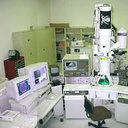Decreased renal uptake of (99m)Tc-DMSA in patients with tubular proteinuria.
Mots clés
Abstrait
Although technetium-99m-dimercaptosuccinic acid ((99m)Tc-DMSA) renal scans are widely used to evaluate renal tubular mass function, the mechanism by which renal uptake of DMSA occurs is still the subject of debate. Patients with various proximal tubular disorders show markedly decreased renal DMSA uptake, even when there is normal creatinine clearance. We measured the renal uptake of (99m)Tc-DMSA 3 h after its injection in 13 patients with Dent disease or Lowe syndrome, both of which are typical proximal tubular disorders with defective megalin and cubilin-mediated endocytosis. Serial images of three patients were also obtained at 0.5, 1, 2 and 3 h post-injection. The correlations between renal uptake of (99m)Tc-DMSA and creatinine clearance and the degrees of acidemia and tubular proteinuria were then evaluated. The renal uptake of (99m)Tc-DMSA was markedly decreased in all patients, and the decreased uptake was detected in all serial images. In contrast, bladder radioactivity was higher than normal in all of the serial images when compared to renal radioactivity. Additionally, the uptake of (99m)Tc-DMSA was inversely proportional to the amount of urine beta(2)-microglobulin. These results strongly suggest that DMSA is filtered in the glomeruli and subsequently undergoes megalin- and cubilin-mediated endocytosis in the proximal tubules.



